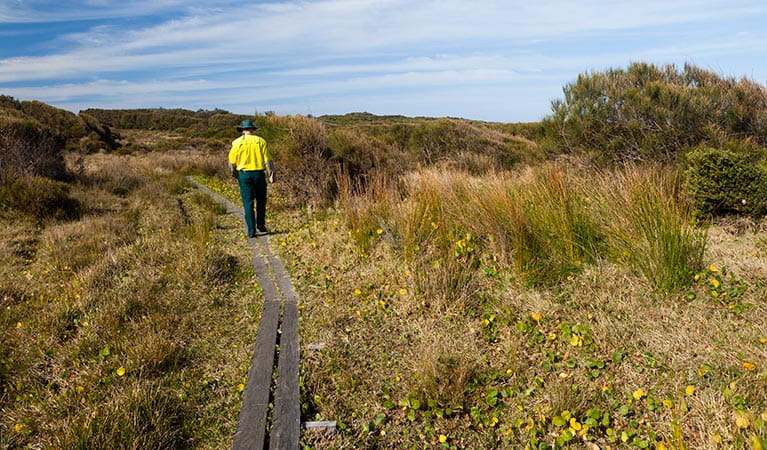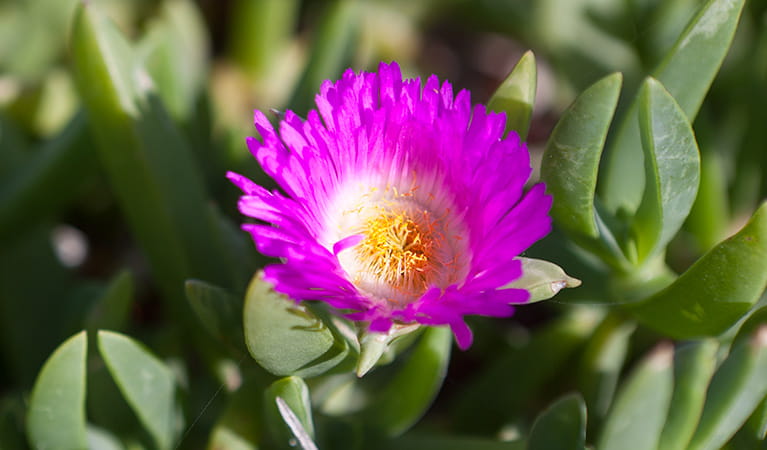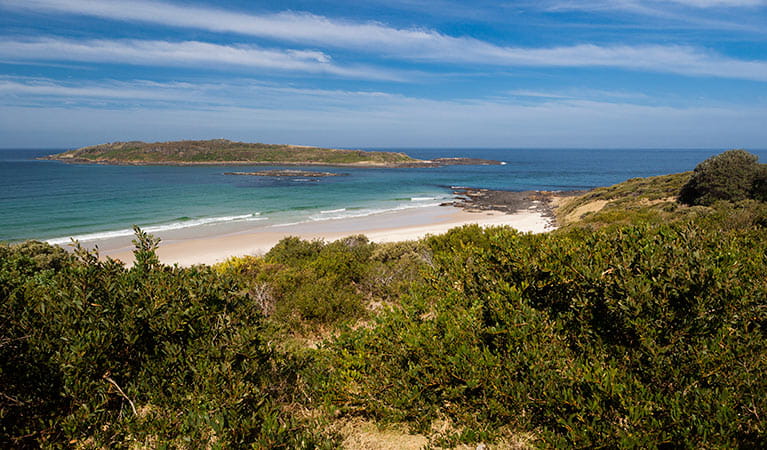Murramarang Aboriginal Area
Learn more
Learn more about why this park is special
Murramarang Aboriginal Area is a special place. Here are just some of the reasons why:
Vast Aboriginal history

There are very few sites on the NSW South Coast with this much heritage. Material found at Murramarang has been dated back to an astounding 12,000 years. The headland, with its rock platforms, fishing, and nesting sea birds, was an important meeting point for Aboriginal people. Large fires where people cooked their food would have been visible for miles, and some archaeological finds suggest people in this area ate whales and dolphins. These days, the area is still used by local Aboriginal people for fishing, recreational and educational activities. Signs along the walking track identify some of the most important features of the area.
- Murramarang Aboriginal Area walking track Murramarang Aboriginal Area walking track is a 2.2km loop track that passes middens and other sites of great Aboriginal cultural and historic significance.
In a flap

Because of the preservation of nature here and its proximity to the coast, Murramarang is a great place to go bird watching. There are many species of threatened seabirds - including the sooty oystercatcher and hooded plover - living on the beaches. Swan Lagoon is an important habitat for waterbirds, including the black swan, little pied cormorant and white-faced heron. Sea eagles and osprey can often be seen swooping over the water.
- Murramarang Aboriginal Area walking track Murramarang Aboriginal Area walking track is a 2.2km loop track that passes middens and other sites of great Aboriginal cultural and historic significance.
First sightings

When Captain Cook first spotted what he would later call Pigeon House Mountain from the sea, he sailed towards the coast to see if he could find a safe place to anchor. On 22 April 1770, he made his first sighting of Aboriginal people - some in bark canoes, others on land - here at Murramarang. Incidentally, the Aboriginal name for Pigeon House is 'Didthul', which is connected to the ocean through Dreaming stories. The first white settlers came to the area to graze cattle and cut timber in the late 1820s.